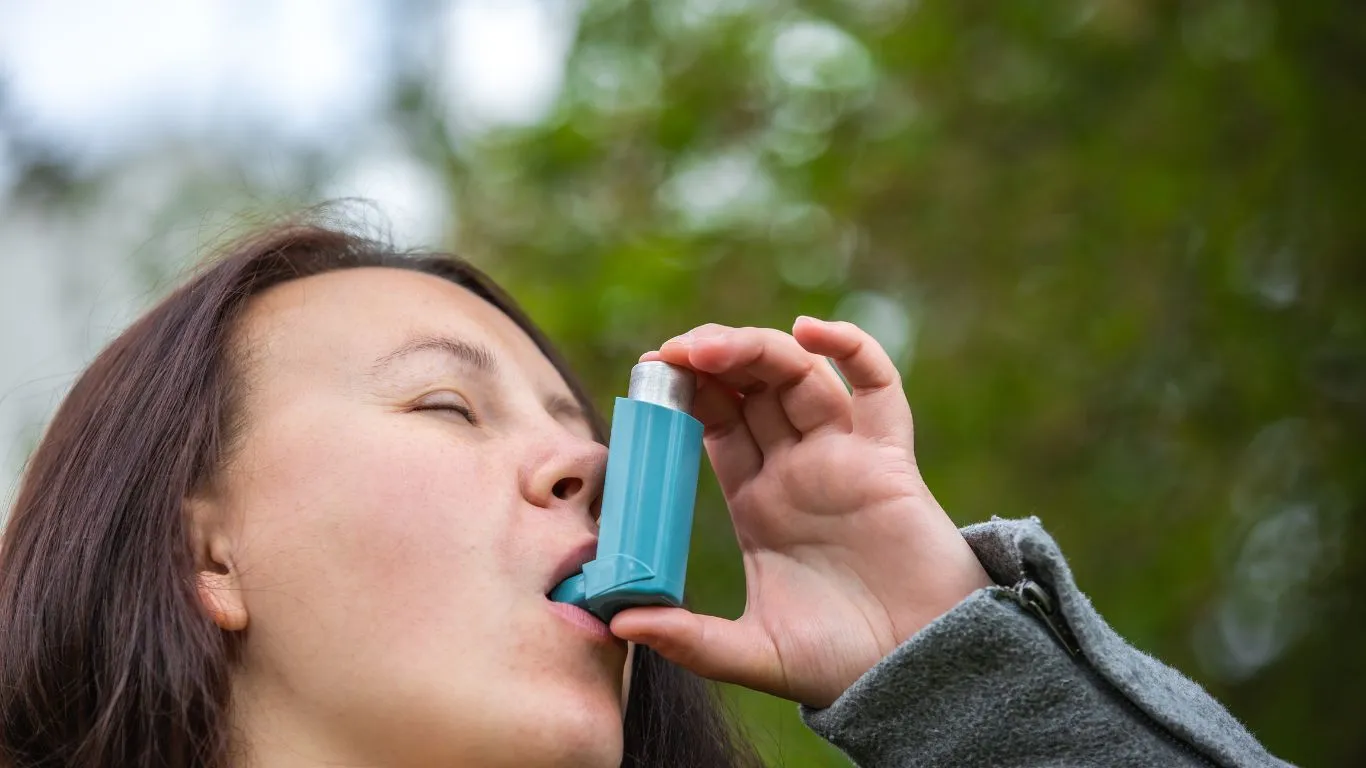Transform How to Build Exercise Tolerance with Asthma for Better Living
If you’re wondering how to build exercise tolerance with asthma, trust me—you’re not alone. As a pulmonary nurse practitioner, I’ve met countless patients who feel caught between wanting to get active and fearing the tight-chested, breathless spiral that asthma can cause. I’ve seen both ends of the spectrum—from competitive athletes managing their asthma like pros to everyday folks just trying to get through a walk without puffing on their rescue inhaler. And here’s the truth: it’s absolutely possible to improve your fitness level with asthma, but it takes a blend of patience, strategy, and the right kind of guidance.
Understanding Asthma and Your Limits

What Happens to Your Lungs During Exercise?
Let’s keep this real. When you start working out, your body demands more oxygen. So your lungs kick into high gear. But if you’ve got asthma, those airways can get twitchy, inflamed, and narrow down just when you need them to open up. That can lead to chest tightness, wheezing, or even a full-on flare. The fancy term for this is exercise-induced bronchoconstriction—basically, your airways are overreacting to the increased demand.
I can’t tell you how many times I’ve had patients say, “But I was just walking up the stairs!” It’s frustrating. And yes, it can feel discouraging. But understanding your body’s reaction is step one to working *with* it instead of against it.
Recognize Your Baseline
Before jumping into any exercise plan, you’ve got to know where you’re starting from. What’s your usual tolerance like? Can you walk a block without symptoms? Two? Do you use your rescue inhaler once a day, or once a week? These are the kinds of questions I ask my own patients during consults.
Tracking your baseline helps set realistic goals and avoid pushing too hard, too fast. And trust me, slow and steady wins this race.
Setting Realistic Goals Without Overdoing It

The Right Kind of Movement Matters
Not all workouts are created equal—especially if you’re asthmatic. Some activities are more likely to trigger symptoms, especially those involving cold, dry air or sudden bursts of exertion. Here are a few gentle, asthma-friendly options that I often recommend:
- Walking – Low-impact and easy to pace. Try a brisk walk around your neighborhood or a treadmill indoors if the weather’s a trigger.
- Swimming – The warm, humid air around the pool can be a game-changer. Plus, it’s great for lung expansion and full-body endurance.
- Yoga or Pilates – These are perfect for building core strength and practicing deep, controlled breathing.
- Cycling (indoor or flat terrain) – Just avoid biking uphill in cold weather unless you’re already well-conditioned.
Use the “10% Rule”
Here’s a little trick I teach my patients: increase your activity by no more than 10% per week. That might mean walking an extra five minutes per session or adding one more day of movement. Going too hard, too fast is one of the biggest reasons people with asthma get discouraged. And flare-ups can knock you off track for weeks—nobody wants that.
Using Medication Strategically

Pre-Treating with a Rescue Inhaler
One of the best kept (but underutilized) secrets in managing exercise with asthma? *Pre-treatment.* Using a short-acting beta-agonist (like albuterol) 15–30 minutes before you start working out can help open up those airways in advance. I’ve recommended this to so many patients, and the difference it makes can be dramatic.
Always chat with your provider before starting this, though—it’s important to use these meds correctly and not over-rely on them.
Long-Term Control Matters Too
If you’re constantly hitting your rescue inhaler just to finish a walk or do yard work, we need to talk about your maintenance meds. Proper long-term control can make your lungs more resilient overall. As someone who’s coached many patients through this process, I’ve seen firsthand how sticking to your daily regimen can make all the difference when it comes to building endurance over time.
Coming up, we’ll dig into how to build a week-by-week training plan and troubleshoot those common roadblocks. But remember, your journey is personal—and with the right mindset, you *can* absolutely get stronger, fitter, and more in control of your asthma.
Creating a Step-by-Step Plan to Build Exercise Tolerance

Start with a Warm-Up—Always
Here’s a tip I’ve given pretty much every asthma patient who wants to work out: never skip the warm-up. Think of your lungs like elastic bands—they’re less likely to “snap” (or spasm) if they’re gently stretched first. A slow five- to ten-minute warm-up—like marching in place or a light stroll—can help your airways ease into activity.
I like to call this the “sneak attack” on your asthma. You’re getting your body moving without shocking your system. It’s low-key, but incredibly effective.
Mix Cardio with Rest Days
When you’re figuring out how to build exercise tolerance with asthma, rest is just as important as movement. You want to build strength gradually, without overloading your lungs. I usually suggest starting with workouts 2–3 days a week and sprinkling in active rest days in between—maybe a leisurely walk, stretching, or light yoga.
- Week 1–2: 10–15 minutes of light cardio (walking, indoor cycling) 2x/week
- Week 3–4: Bump to 20 minutes, still low intensity, 3x/week
- Week 5+: Add in some light intervals or resistance training if tolerated
This kind of structure lets your lungs adjust and keeps you from burning out or triggering symptoms. And remember, if something feels “off,” it’s okay to pull back. Your body will tell you what it needs—listen to it.
Paying Attention to Triggers

Environmental Factors Matter
As someone who’s lived through Florida’s humidity and visited Denver’s dry mountain air, I can tell you: where you work out matters. If you’re trying to build up tolerance but constantly running into triggers like pollen, cold air, or pollution, you’ll end up frustrated.
Here’s what to watch for:
- Cold air: Try to breathe through your nose or wear a scarf over your mouth if you’re outside in chilly temps.
- High pollen: Check pollen counts and stick to indoor workouts on bad days.
- Pollution/smog: Avoid working out near heavy traffic or during high ozone hours (typically mid-afternoon).
If weather is a trigger—and for many people, it is—indoor workouts are your best friend. I’ve coached plenty of patients through treadmill routines, home cycling, even hallway walking sessions when outdoor air was just too irritating.
Track Symptoms and Patterns
One of the most valuable things you can do is keep an exercise-asthma journal. Sounds old school, but it works. Jot down what you did, how long you did it, how you felt before, during, and after. Over time, you’ll start to see patterns. Maybe you do fine in the morning but struggle at night. Or maybe indoor workouts leave you symptom-free while outdoor hikes are a no-go.
That kind of insight is gold—both for you and your provider. I’ve used these journals with patients to fine-tune everything from inhaler timing to workout timing.
Breathing Techniques and Mind-Body Connection

Try Pursed-Lip Breathing
This is a go-to technique I teach in clinic. If your breathing gets shallow or rapid mid-workout, pursed-lip breathing can help slow things down. Here’s how you do it:
- Inhale through your nose for 2 seconds
- Exhale slowly through pursed lips (like you’re blowing out a candle) for 4 seconds
It sounds super simple, but it helps keep your airways open longer and reduces that panicky “I can’t catch my breath” feeling. Many of my patients tell me it’s become second nature after just a few weeks.
Don’t Underestimate Relaxation
Asthma isn’t just a physical thing—it’s also emotional. When you’re short of breath, anxiety kicks in fast, which tightens your muscles and makes breathing even harder. It’s a vicious cycle.
That’s why I encourage mindfulness practices like guided meditation, progressive muscle relaxation, or even just five minutes of quiet breathing. These help your nervous system chill out, which can ease asthma symptoms too. As strange as it sounds, the calmer you are, the more in control your lungs feel.
In my own practice, I’ve seen how just a few changes to breathing patterns and mindset can lead to better endurance—and fewer flare-ups.
Support Systems and Staying Consistent

Find an Accountability Buddy
Let’s be real—it’s easier to skip a workout when no one’s watching. Having someone to move with, even virtually, can keep you going on those “meh” days. Whether it’s a walking partner, a workout group, or a coach who checks in weekly, accountability keeps momentum alive.
Some of my patients team up with friends, others join Facebook groups or virtual fitness communities designed for folks with asthma or chronic health issues. Those little check-ins make a big difference.
Celebrate the Small Wins
And please—celebrate every little milestone. Got through a 15-minute walk without symptoms? That’s a win. Needed your inhaler less this week? Huge win. Exercise tolerance takes time to build, especially when asthma’s part of the equation.
Be patient, be kind to yourself, and know that you’re making progress—even when it doesn’t feel like it. Next up, we’ll dig into how nutrition, hydration, and sleep play a role in asthma-friendly fitness, plus some real stories from patients who’ve been exactly where you are now.
Nutrition, Hydration, and Recovery: The Overlooked Pillars of Asthma-Friendly Fitness

Fuel Your Lungs with the Right Foods
Now let’s talk fuel—because yes, what you eat really can affect how your lungs perform. I’ve worked with enough asthma patients to notice a trend: those who clean up their nutrition often report fewer flare-ups and more energy during exercise. It’s not magic; it’s science.
Here’s a quick list of asthma-friendly nutrition tips:
- Omega-3 rich foods: Salmon, chia seeds, walnuts—these help reduce inflammation.
- Colorful fruits and veggies: Antioxidants support lung tissue and fight off free radicals.
- Magnesium-rich foods: Spinach, almonds, avocado—magnesium has bronchodilating properties.
- Limit processed foods: They often contain sulfites or additives that can trigger symptoms.
One of my longtime patients told me she started meal prepping with anti-inflammatory foods, and within a few weeks, she noticed she wasn’t reaching for her rescue inhaler as often. That’s a win in my book.
Hydration Helps More Than You Think
Staying hydrated isn’t just for athletes—it’s a huge piece of managing asthma. When you’re dehydrated, the mucus in your lungs thickens, making it harder to breathe. Keeping your airways moist and your body balanced can ease breathing during and after workouts.
Try to sip water throughout the day instead of guzzling it before your workout. I keep a big water bottle on my desk and aim to finish at least two full ones by evening—it’s a simple habit that goes a long way.
Sleep and Recovery: Give Your Lungs a Break

Don’t Sleep on… Sleep
I can’t stress this enough—your body repairs itself during sleep, and that includes your respiratory system. If you’re skipping rest or dealing with poor-quality sleep, your body won’t recover properly from workouts, and that can make asthma symptoms worse over time.
Some of my patients experience nighttime asthma (aka nocturnal asthma), and it really impacts their ability to bounce back after exercise. If that’s you, bring it up with your provider—it might mean your meds need adjusting.
Active Recovery is Still Progress
Let go of the “go hard or go home” mentality. For folks with asthma, active recovery days are just as important as high-energy workout days. Think stretching, gentle yoga, deep breathing, even a nature walk. These still move your body without overtaxing your lungs.
And honestly? Recovery is where your endurance builds. Your body adapts during rest, not during the workout itself.
Real Talk: Success Stories from Patients Like You

Meet “Lisa” – From Struggling to Striding
Lisa, one of my patients in her early 50s, had a long history of moderate persistent asthma. She was afraid to exercise because of a bad experience on a neighborhood jog years ago. Together, we built a plan with low-impact movement, pre-treatment inhaler use, and daily journaling.
Within three months, Lisa was walking 3 miles three times a week, using her rescue inhaler less, and feeling more energized than she had in years. Her lung function even improved on her spirometry test. These kinds of transformations aren’t overnight—but they are absolutely possible.
“Drew” the Aspiring Cyclist
Drew was 27 and wanted to train for a charity bike ride but kept having tightness halfway through practice rides. After tweaking his warm-up and adjusting when he used his meds (and adding magnesium-rich foods to his diet), he not only completed the ride—he enjoyed it without a single asthma episode.
What works for one person might need adjustment for another, but the point is—progress happens when you stay consistent and tuned into your body’s signals.
Building Long-Term Confidence with Asthma and Exercise
Reframe Setbacks
You’re going to have days where breathing is harder or your energy’s low. That’s okay. It doesn’t mean you’ve failed—it means you’re human. I always tell my patients, “A bad day is just data.” It’s a chance to learn, adjust, and keep going.
Keep the End Goal in Mind
Your goal isn’t to run a marathon tomorrow (unless that’s your thing!). It’s to feel stronger, breathe easier, and not let asthma hold you back from living your life fully. Whether that means keeping up with your kids, traveling more, or just walking without gasping—it’s all valid, and it’s all possible.
References
- Asthma and Allergy Foundation of America
- American Lung Association
- Centers for Disease Control and Prevention
- National Heart, Lung, and Blood Institute
Disclaimer
This article is for informational purposes only and does not substitute professional medical advice. Always consult your healthcare provider before starting a new exercise or treatment plan. Individual results may vary based on your personal health history and asthma severity.

Bianca Nala is a compassionate Nurse Practitioner with a strong background in primary and respiratory care. As a health writer for Healthusias.com, she combines her clinical expertise with a talent for clear, relatable storytelling to help readers better understand their health. Bianca focuses on topics like asthma, COPD, chronic cough, and overall lung health, aiming to simplify complex medical topics without losing accuracy. Whether she’s treating patients or writing articles, Bianca is driven by a single goal: making quality healthcare knowledge accessible to everyone.






